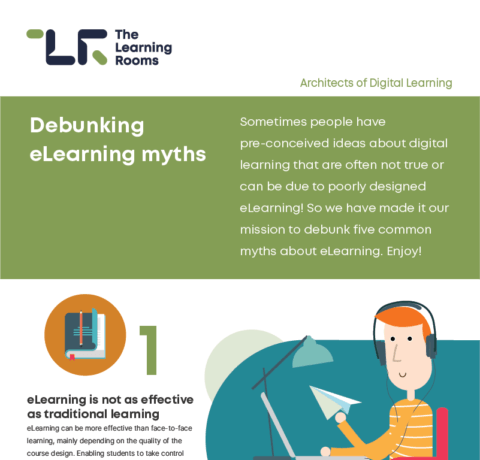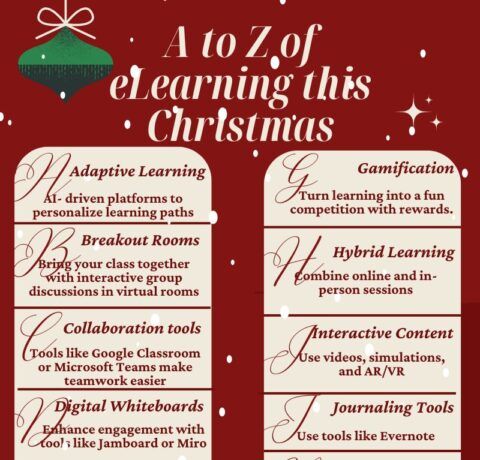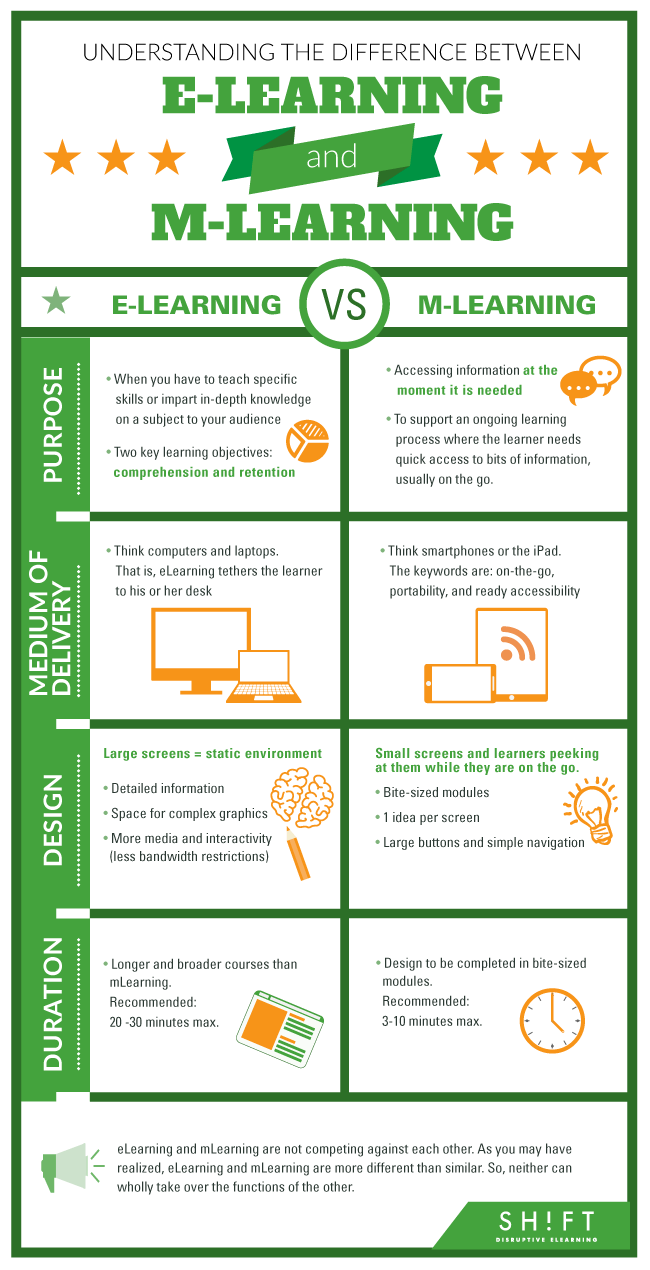Understanding The Difference Between eLearning and mLearning Infographic
Although eLearning and mLearning are used synonymously in many quarters, the two modes of learning differ in many respects.
The “e” in eLearning is “electronic.” So eLearning is any form of learning that is delivered using electronic devices like the computer via channels like the Internet. However, learning can also be delivered via the Intranet/Extranet networks.
The “m” in mLearning is “mobile.” So mLearning is any form of knowledge that is given using hand-held and portable devices. Therefore, mLearning is a sub-set of eLearning because both rely on digital communication to take the teach to the learners. But the similarities end here.
The Understanding The Difference Between eLearning and mLearning Infographic presents all the basic information you need to know about the two formats so that you can create effective instructional content for each.
Difference Between eLearning and mLearning
1. The Purpose
eLearning gets the nod when you have to teach specific skills or impart in-depth knowledge on a subject to your audience. The eLearning keywords are: structured, formal, and time-bound.
You choose mLearning to support an ongoing learning process where the learner needs quick access to bits of information, usually on the go. The mLearning keywords are: on-demand, just-in-time, and context-aware.
2. The Medium of Delivery
If it is eLearning, think computers and laptops. That is eLearning tethers the learner to his or her desk. If it is mLearning, think smartphones or the iPad. The keywords are: on-the-go, portability, and ready accessibility.
3. The Design
If it is eLearning, it will usually be on a computer or a laptop. This means that you have the screen real estate, and you have also managed to pin down the learner to his seat.
If you are a designer, you can let loose your creativity when you design an eLearning course. If you can create an enticing layout peppered with the right amount of drama and tension, be assured that your learner will sit through the end of the course.
On the other hand, when talking about mLearning, you neither have the screen real estate nor are you assured of the learners’ undivided attention. So mLearning units have to fit content within a small space, and there is usually no more than one idea in one screen. mLearning units have simple screens with simple navigation.
4. The Duration
Adult corporate learners don’t have all the time in the world. The smartphone users amongst them have even less time. So if you are creating an eLearning course, keep it to between 20 minutes and 30-45 minutes max. On the other hand, chunk your mLearning courses into bite-sized pieces of 3-10 minutes duration.
eLearning and mLearning are not competing against each other. Both can feature in a blended learning program where mLearning would supplement eLearning courses.







You can adjust your cookie preferences here.